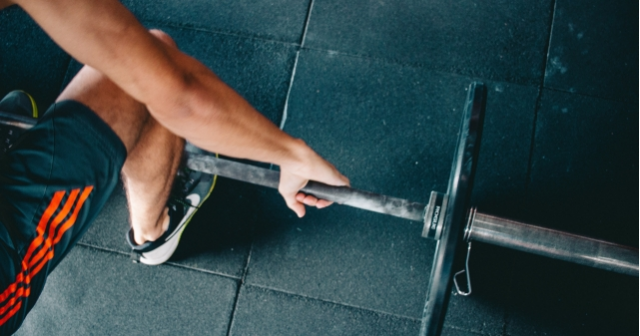The Best Weight Training for Freediving
by FII - February 01st
With winter in full swing, it’s challenging for many of us to get out for freediving or spearfishing. Luckily, freediving greatly benefits from proper cross-training.


The FII Level 3 graduates among you are probably recalling the number of options and principles on how to fine tune your training based on the variables specific to your goals. While a specific approach is ideal for results vs. time invested, laying down a solid foundation for any level of freediver can be accomplished through a basic weight training program that includes sport-specific exercises.
This basic program is ideal for a freediver or a spearfisherman looking to build a solid base during the off-season.
The goal of this article is not to teach you how to properly exercise and/or lift weights but to highlight some exercises suitable for physical conditioning to help your freediving. The content presented here is intended to be informative only, and any practical execution of the exercises listed below is at the reader’s risk.
Before engaging in any type of new exercise program—and this applies especially for weight training—discuss it first with your physician to make sure the workload is suitable for you. Additionally, just as with any sport, what makes a difference between an effective workout and risking an injury is proper technique. Therefore, seek guidance from a certified professional trainer on the proper execution and/or a different variation of the exercise that is better suited to you and that will accommodate any prior injuries.
Warm Up
Start with five minutes of dynamic stretches that focus on the muscle groups you will be working that day. You can find a great routine here: https://www.youtube.com/watch?v=Pz_NXxhQCJc
And a variety of other suitable examples can be found here: https://www.youtube.com/watch?v=nPHfEnZD1Wk
An additional warm-up option is ten minutes of light cardiovascular exercise. Approximately ten minutes is enough time to get the blood flowing, get your muscles ready for the workout, set your metabolism to the proper rate, and decrease the chance of injuries. My favorites are the stair climber or vertical climber, but that’s up to you. Using a treadmill, elliptical, or skipping rope are other options. The goal is to start breaking sweat toward the end of your warm-up.
Here’s an example of a weekly training schedule:
Workout 1
- Bench Press
- 45-degree Incline Press with Dumbbells
- Barbell Curls
- Dumbbell Hammer Curls
- Hanging Leg Raises or Abs Wheel
Workout 2
- Barbell Squats or Leg Press
- Leg Extensions
- Leg Curls
- Calf Rises
- Hyperextensions
- Hanging Leg Raises or Abs Wheel
Workout 3
- Row Pulls
- Lat Pulldowns
- Parallel Dips with elbow no more than 90 degrees
- Lat Pulldown for Triceps
- Hanging Leg Raises or Abs Wheel
These exercises address the proper muscle groups for freedivers, but the key element to success is the proper dosage. Freedivers and spearfishermen train with light weights (20 percent to 30 percent of your max) with higher reps. Four or five sets of twelve to fifteen reps with 1.5 to 3 minutes between sets is where the majority of us will find the greatest benefits. When it comes to the ab exercises or triceps dips, take each set to the point of failure.. Make sure you take at least one day off between your weight training days and appropriately adjust your carbs and protein intake to help your recovery. Do not attempt this training routine while on the keto or Atkins diets. (I will offer more on diet another day.)
